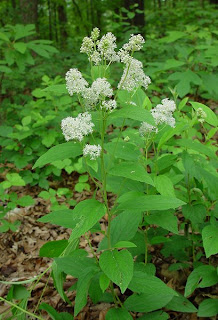THYME

Latin Name: Thymus vulgaris
Alternate Names: Garden Thyme, Wild Thyme
Family: LAMIACEAE
Parts Used: Above ground portion.
Properties: Antibacterial, Anthelmintic, Antifungal, Antiseptic, Antispasmodic, Antitussive, Aromatic, Astringent, Carminative, Diaphoretic, Diuretic, Emmenagogue, Expectorant, Immune Stimulant, Rejuvenative, Rubefacient, Sedative, Stimulant, Tonic, Vermifuge, Vulnerary.
Internal Uses: Alcoholism, Appetite Loss, Asthma, Bronchitis, Catarrh, Colds, Colic, Cough, Depression, Diarrhea, Dysmenorrhea, Dyspepsia, Flatulence, Flu, Gastritis, Hangovers, Hay Fever, Headache, Herpes, Hysteria, Indigestion, Laryngitis, Pleurisy, Shingles, Sinusitis, Sore Throat, Stomachache, Tetanus, Tuberculosis, Whooping Cough, Worms
Internal Applications: Tea, Tincture, Capsules.
Small amounts are a sedative whereas larger amounts are a stimulant. It is used against hookworm, roundworms, and threadworms. Thyme warms and stimulates the lungs, expels mucus and relieves congestion. It also helps deter bacterial, fungal and viral infections. Both thymol and carvacrol have a relaxing effect upon the gastrointestinal tract's smooth muscles.
Small amounts are a sedative whereas larger amounts are a stimulant. It is used against hookworm, roundworms, and threadworms. Thyme warms and stimulates the lungs, expels mucus and relieves congestion. It also helps deter bacterial, fungal and viral infections. Both thymol and carvacrol have a relaxing effect upon the gastrointestinal tract's smooth muscles.
Topical Uses: Acne, Arthritis, Asthma, Athlete's Foot, Blemishes, Bronchitis, Bruises, Burns, Candida, Colds, Crabs, Dandruff, Dental Decay, Depression, Eye Soreness, Flu, Fungal Infection, Halitosis, Insect Bites, Insect Stings, Laryngitis, Lice, Mastitis, Mouth Sores, Muscle Soreness, Parasites, Plaque, Rheumatism, Ringworm, Scabies, Sciatica, Sore Throat, Thrush, Tonsillitis, Warts, Wounds
Topical Applications: Gargle and mouthwash for dental decay, laryngitis, mouth sores, plaque formation, sore throat, thrush, tonsillitis, and bad breath. Compress for lung congestion such as asthma, bronchitis, colds and flu. Poultice for wounds, mastitis, insect bites and stings. Wash for fungal infections such as athlete's foot and ringworm, and use against parasites such as crabs, lice and scabies. Douche for Candida. Compress for bruises. Use as an eyewash for sore eyes and as a hair rinse for dandruff. Use a salve on acne, blemishes, burns and wounds. Use as a bath herb for sore muscles, arthritis, and colds. Essential oil is added to soaps and antidepressant inhalations. Added to massage oils for sore muscles, rheumatism and sciatica, and applied directly to warts. Used as a strewing herb in Middle Ages.
Culinary uses: Added to soups, stews, vegetables, chicken, jams, fruit salads, bouquets garni, gumbos, and Benedictine liqueur. Aids in the digestion of high fat foods. Used to preserve meat. Thyme honey, made when bees collect pollen from thyme flowers, is excellent.
Energetics: Pungent, Bitter, Warm, Dry.
Chemical Constituents: Essential oil (borneol, carvacrol, cymol, linalool, thymol), bitter principle, tannin, flavonoids (apigenin, luteolin), saponins, triterpenic acids.
Contraindications: Avoid therapeutic doses during pregnancy. As with most essential oils, it must be diluted before applying to the skin.
Comments: The genus name Thymus may be derived from the Greek word thymon meaning 'courage' as it was once used as a bath herb by Roman soldiers to help them be more courageous. It also helps people to speak up more courageously. Or perhaps it was from the Greek thymon, 'to fumigate', as it has been used as an incense. The species name serpyllum for Wild Thyme may be due to the plant's creeping snakelike appearance and in reference to the ancient treatment of snakebites and the bites of poisonous sea creatures with Thyme. The plant was burned in ancient Roman times to deter scorpions.
It is still used for embalming. Oil of Thyme was used during World War I to treat infection and to help relieve pain. On Midsummer Night's Eve, fairies are said to dance on beds of Thyme.
Its energetic is mildly bitter.
The common name Thyme includes the species Thymus serpyllum (Wild Thyme), which is used interchangeably with Thymus vulgaris (Garden Thyme).
It is still used for embalming. Oil of Thyme was used during World War I to treat infection and to help relieve pain. On Midsummer Night's Eve, fairies are said to dance on beds of Thyme.
Its energetic is mildly bitter.
The common name Thyme includes the species Thymus serpyllum (Wild Thyme), which is used interchangeably with Thymus vulgaris (Garden Thyme).

